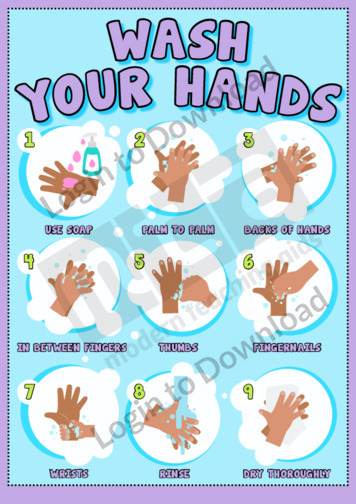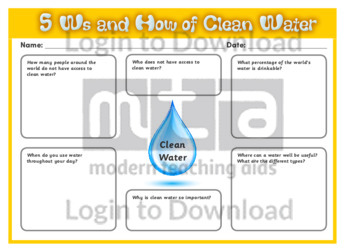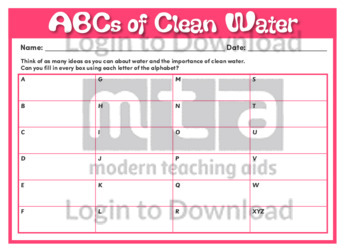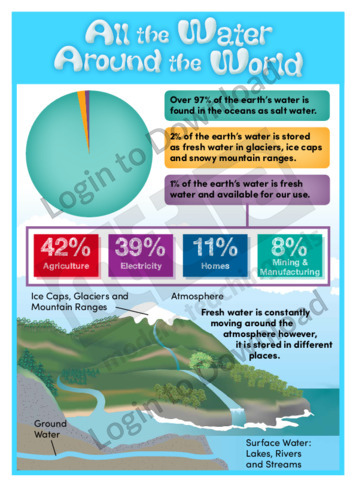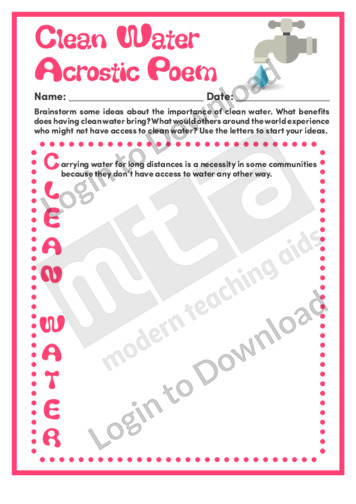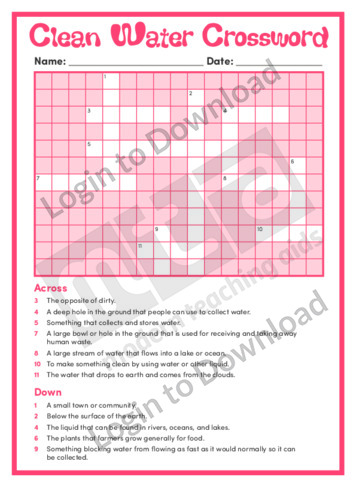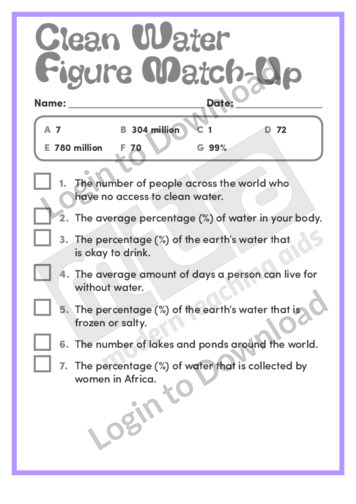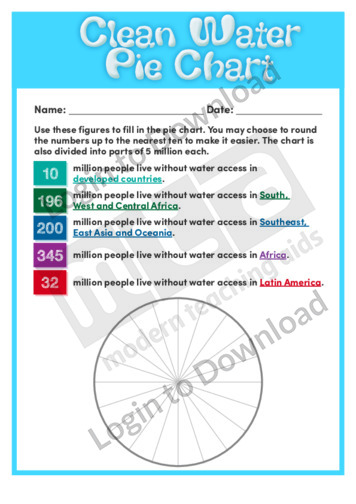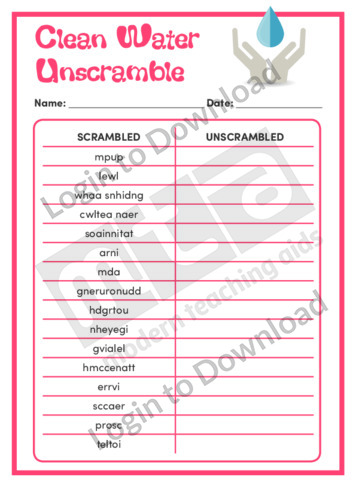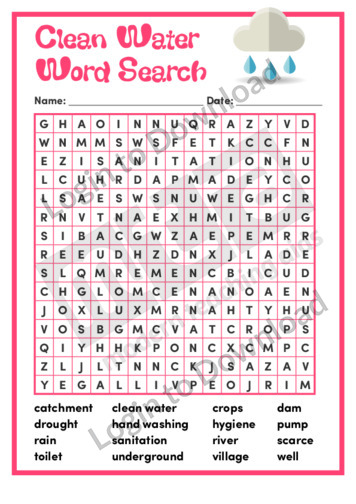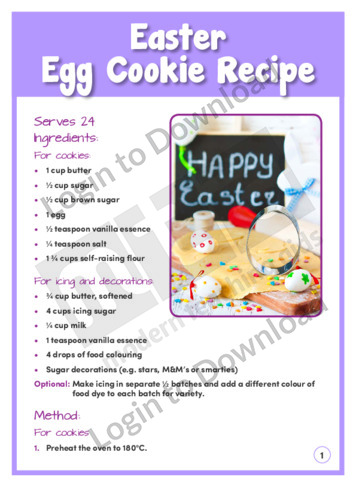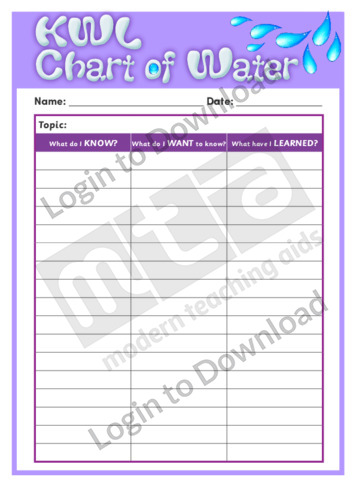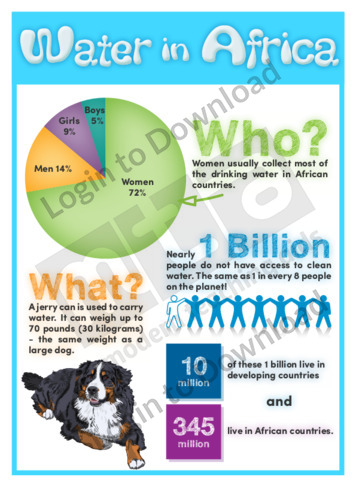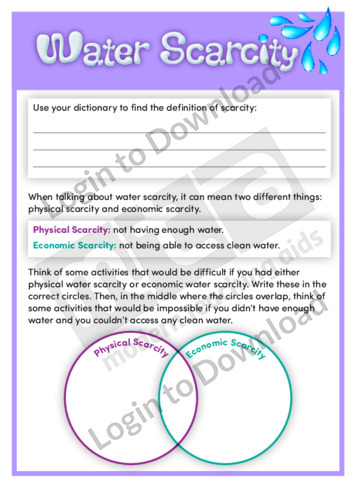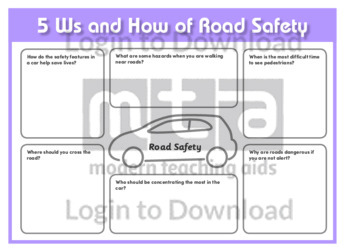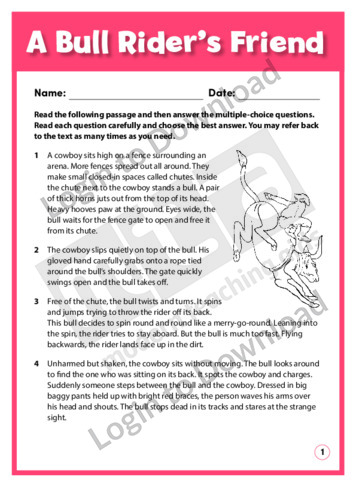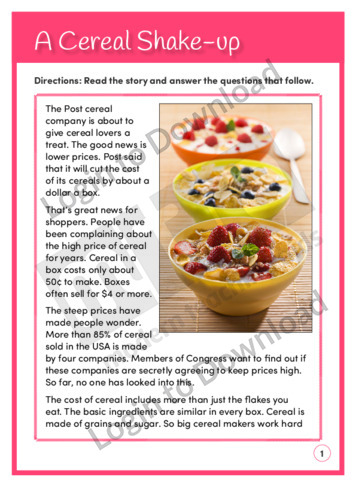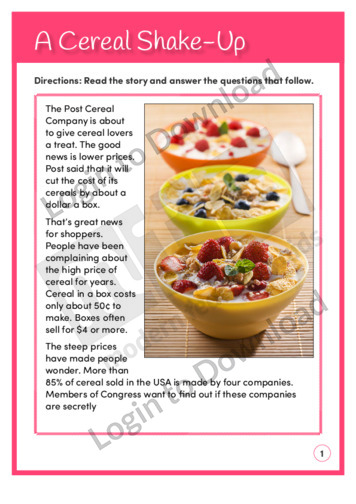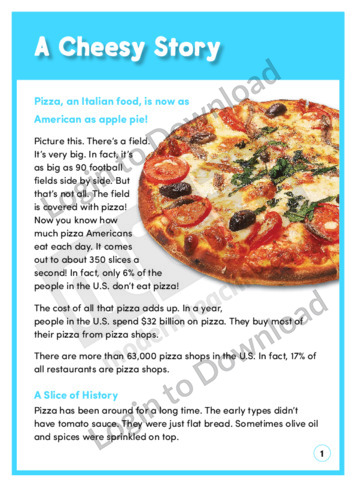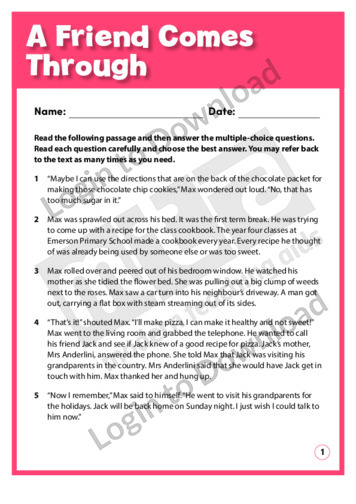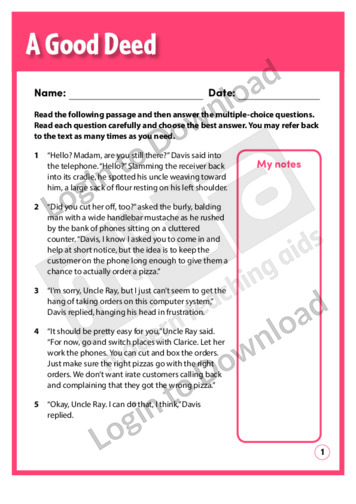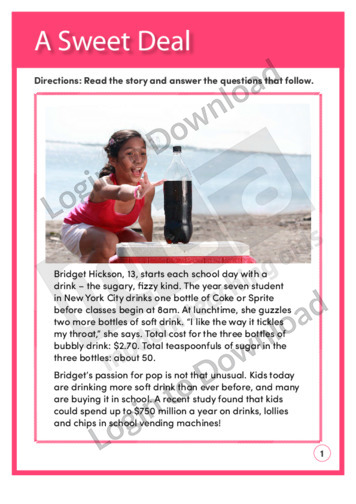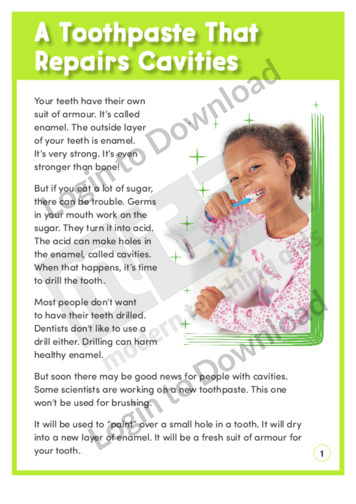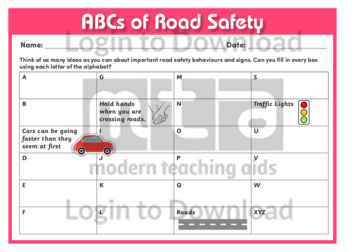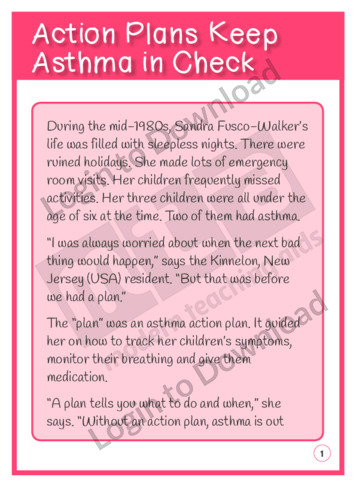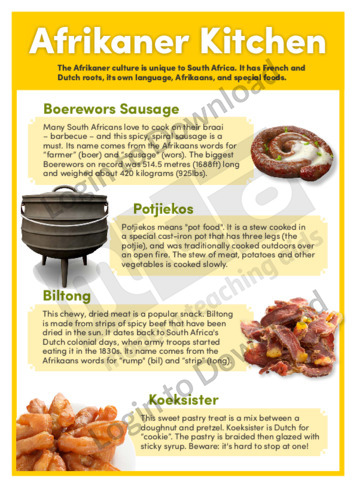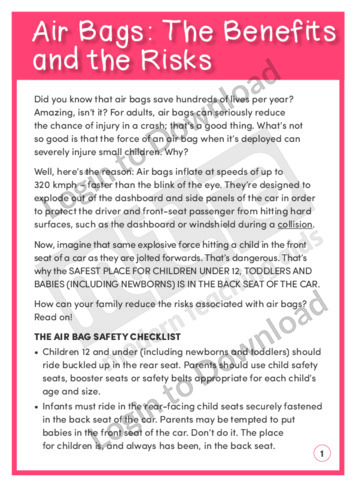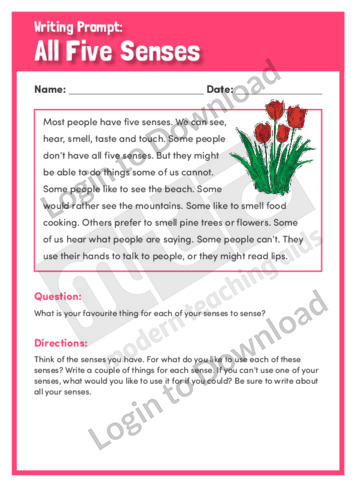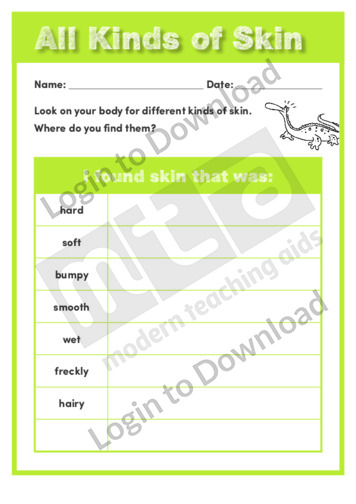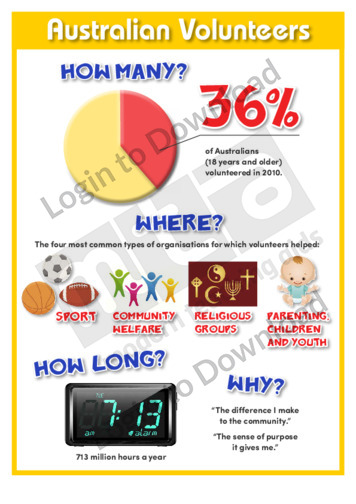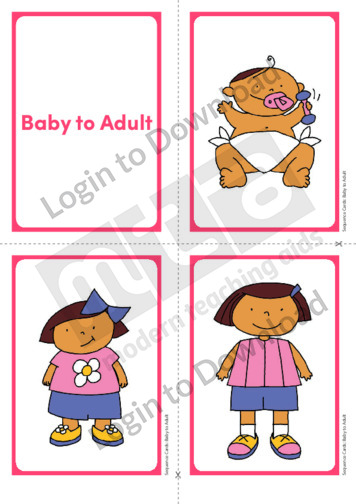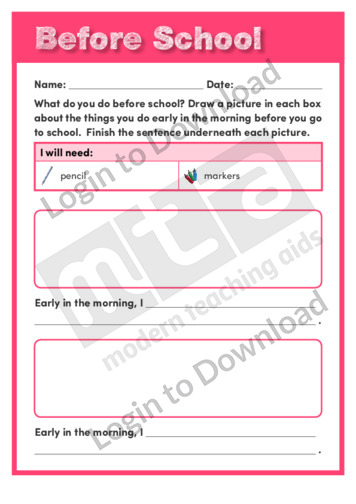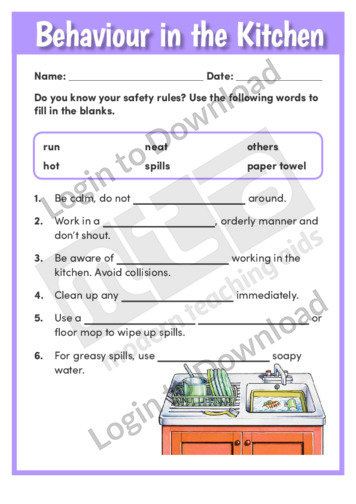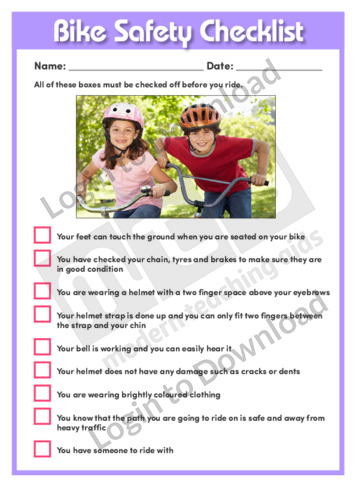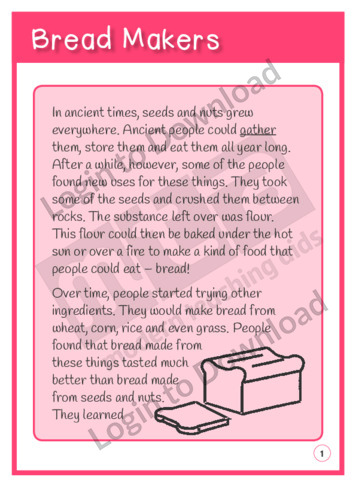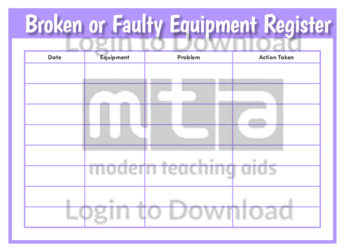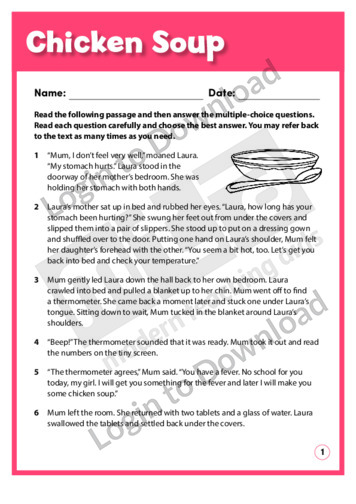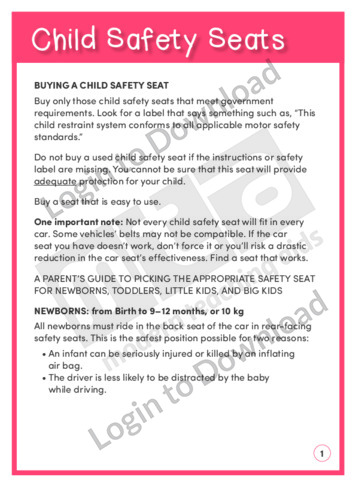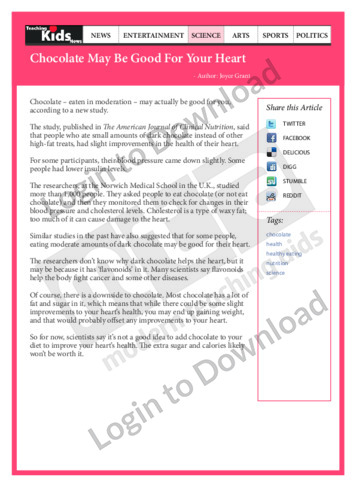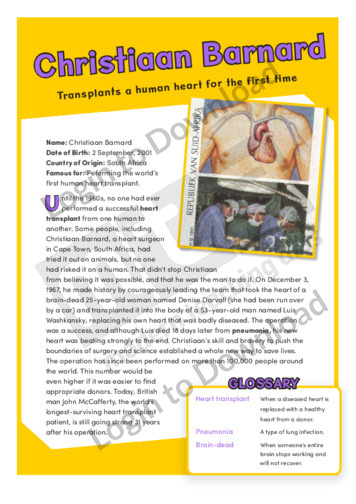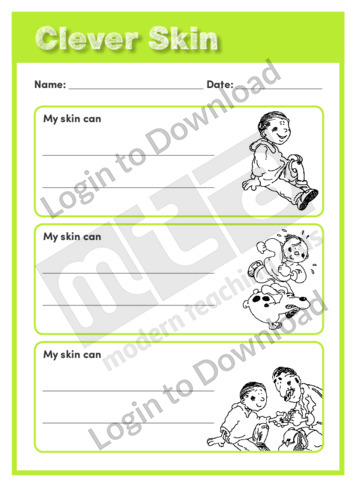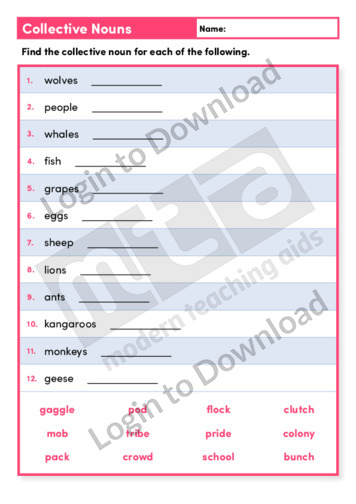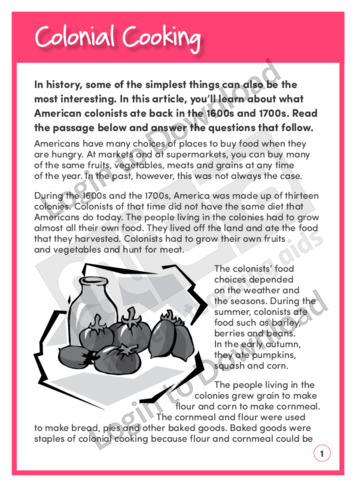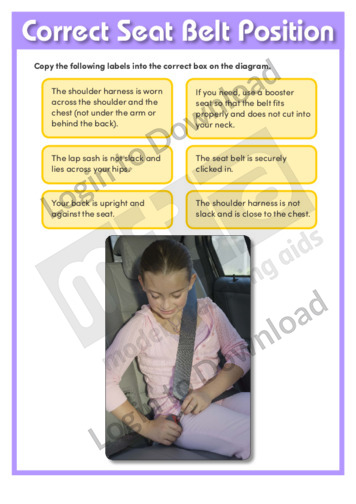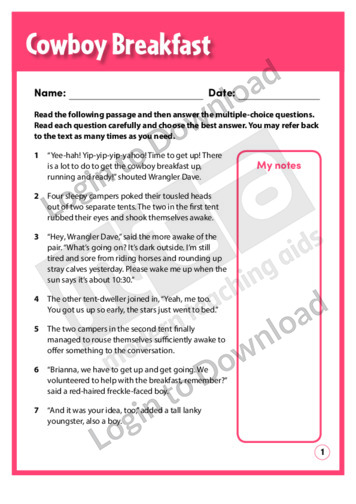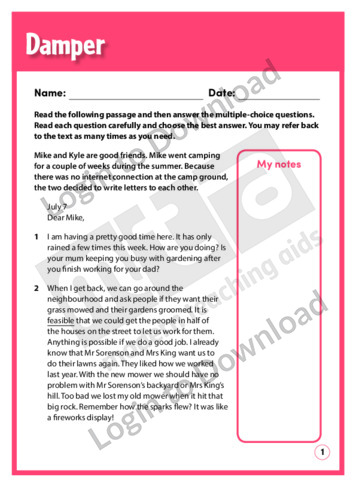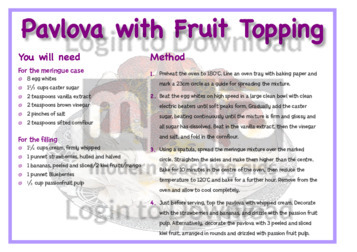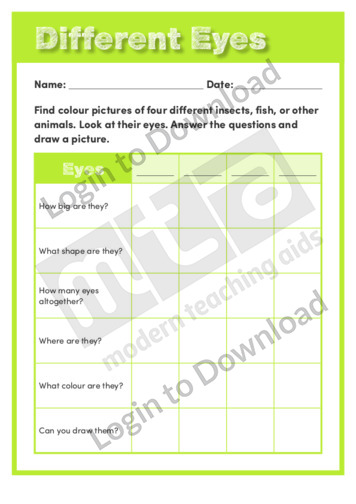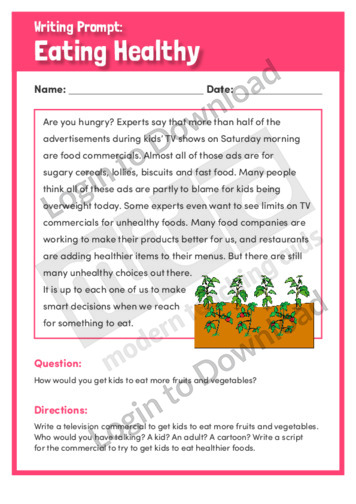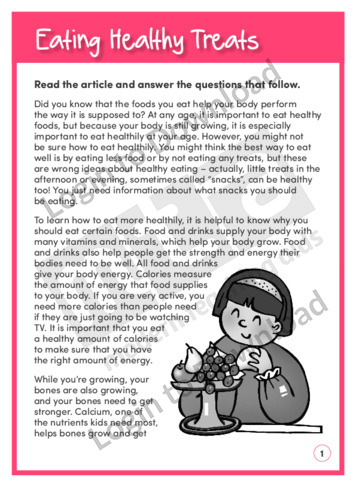This worksheet, ‘5Ws and How of Clean Water’ provides a structured diagram that helps students identify the who, what, when, where, why and how of water sanitation and collection. It is a great visual graphic that can be used as a comprehension activity and to generate meaningful class discussion.
This worksheet, ‘ABCs of Clean Water’ provides an alphabet grid that students can use to develop their vocabulary and brainstorm different ideas about the water cycle, water sanitation and water collection. This is a fun and simple resource that can be used effectively before, during or after an activity and across ability levels. It can …More
This simple infographic, ‘All the Water Around the World’ is a fantastic colourful resource that is a great addition to a unit on water collection, sanitation or the water cycle. Students are given interesting facts and figures that outline the amount of drinkable water around the world, how it is used and where it is …More
This worksheet, ‘Clean Water Acrostic Poem’ is a fantastic quick activity to brainstorm facts and ideas about water sanitation. It is a fun resource that can be used without preparation across all age groups and abilities. Students are required to use the letters from the words ‘clean water’ to list facts or ideas that they …More
This worksheet, ‘Clean Water Crossword’ provides students with the opportunity to use skills including vocabulary, reasoning and spelling to find the correct water words to complete the puzzle. It encourages students to identify and understand the terms being used and to build on their vocabulary of key words used when discussing water sanitation and collection. …More
This worksheet, ‘Clean Water Figure Match-Up’ is a fun and engaging activity to explore interesting facts and figures about water. Students must match each fact to its corresponding figure by either cutting out or drawing links. This resource encourages students to think logically and analytically to ascertain the most likely answer. An answer sheet is …More
This worksheet, ‘Clean Water Pie Chart’ is a simple resource that links mathematics with a unit of water accessibility around the world. Students are provided with figures and information which they must use to complete the pie chart.
This worksheet, ‘Clean Water True or False’ is a thought-provoking worksheet that requires students to asses the truth of facts about water around the world. Many students may presume the answers quickly only to realise their assumptions were not correct which can lead to interesting discussions and further research into water sanitation related topics. An …More
This worksheet, ‘Clean Water Unscramble’ is a great activity that encourages students to study the sounds and spellings of words associated with water sanitation. Students will be challenged to unscramble letters to find common words used during this topic. An answer sheet is also provided.
This worksheet, ‘Clean Water Word Search’ gives students the opportunity to learn new vocabulary and improve their spelling of words associated with water sanitation and collection. Students must scrutinise the spelling of each word on their list, ensuring new vocabulary is committed to memory with the correct spelling.
This worksheet, ‘Clean Water Word Shapes’ is a great resource that encourages students to examine the spelling and letter shapes of words associated with water collection. Students must use the word bank to match the letter shapes to the correct words.
This informational text, ‘Collecting Water’ features important factual information about different processes of collecting water. It is aimed at broadening students’ understanding about where water comes from before reaching our taps. It also provides a glossary of key terms to familiarise students with language commonly associated with collecting water.
This hands-on activity, ‘Easter Egg Cookie Recipe’ provides step-by-step recipe instructions for students to follow in the classroom or at home whilst helping them to understand the process of procedural writing. This resource gives students the opportunity to study the structure of a recipe and the language of instruction. It is a great example to …More
This worksheet, ‘KWL Chart of Clean Water’ prompts students to explore what they know about water sanitation, what they want to learn and what they have learnt following activities. This is a great, clearly formatted resource to encourage students to take responsibility for their own learning and to assist teachers in establishing their students’ prior …More
This simple infographic, ‘Water in Africa’ is a fantastic colourful resource that is a great addition to a unit on water collection or sanitation in developing countries. Students are given interesting facts and figures that outline who typically collects the drinking water, how they collect water and how many people do not have access to …More
This worksheet, ‘Water Scarcity’ is an easy resource that can be used to introduce or supplement a topic on water access around the world. Students are directed to use their dictionaries to describe the meaning of scarcity and then are provided with the meanings of the two types of water scarcity, physical and economic. They …More
This worksheet, ‘5Ws and How of Road Safety’ provides a structured diagram that helps students identify the who, what, when, where, why and how of safe road behaviours. It is a great visual graphic that can be used to generate meaningful class discussion.
This article, ‘A Bull Rider’s Friend’ starts with a narrative then goes on to describe the role and importance of rodeo clowns. It provides opportunities for students to practise vocabulary and comprehension skills. Answer sheet provided with file download.
This reading comprehension activity, ‘A Cereal Shake-up’, asks students to answer comprehension questions on a text about cereal companies and costs in America.
This reading comprehension activity, ‘A Cereal Shake-up’, asks students to answer comprehension questions on a text about cereal companies and costs in America.
This content area reading activity, ‘A Cheesy Story’ is a maths based reading comprehension exercise encouraging students to use headings to divide their writing into sections.
This story, ‘A Friend Comes Through’ tells how Max’s friend helps him to find a healthy recipe for his class cookbook. It includes a procedure and provides opportunities for students to practise vocabulary and comprehension skills. Answer sheet provided with file download.
In the story, ‘A Good Deed’ a boy is called in to help his uncle out in a busy pizza restaurant. After initial problems, he proves to be a good worker. It provides opportunities for students to practise vocabulary and comprehension skills. Answer sheet provided with file download.
This reading comprehension activity ‘A Sweet Deal’, asks students to answer comprehension questions on a text about soft drinks machines in schools.
This worksheet, ‘ABCs of Road Safety’ provides an alphabet grid that students can use to develop their vocabulary and brainstorm different ideas about road safety concepts. This is a fun and simple resource that can be used effectively before, during or after an activity and across all ability levels. It can also be utilised during …More
This reading comprehension activity, ‘Action Plans Keep Asthma in Check’ asks students to answer questions about asthma and action plans to cope with it. It is aimed at increasing students’ awareness of semantics and encourages students to recall information and think about word meanings.
This history article ‘Afrikaner Kitchen’ features important factual background information about the objects and symbols associated with the cuisine of this South African ethnic group. It identifies the Boerewors sausage, potjiekos, biltong and koeksister as icons of Afrikaner food, which are still eaten in South Africa today. It is aimed at broadening students’ historical and …More
This reading comprehension activity, ‘Air Bags: The Benefits and the Risks’ asks students to answer questions about air bags and safety. It is aimed at increasing students’ awareness of semantics and encourages students to recall information, summarise and think about word meanings.
This writing prompt, ‘All Five Senses’ helps students to write about what they like to use each of their five senses for. It encourages students to think about the five main senses and is aimed at broadening students’ writing and language skills.
This life science worksheet, ‘All Kinds of Skin’ asks students to identify different kinds of skin on their own bodies. It supports an understanding of the human body.
This ‘Allergies’ chart allows teachers to record the food, medicine or other allergies and intolerances of their students. It is an essential tool for teachers to ensure the wellbeing and safety of their students and to avoid serious incidents.
This hands-on activity ‘April Recipe: Warm Lamb Salad’ provides step-by-step instructions for students to follow in the classroom or at home. This resource gives students the opportunity to study the structure of a recipe and the language of instruction and is a great example to prompt more complex procedural writing. Each of the twelve monthly …More
This hands-on activity ‘August Recipe: Pear and Apple Crumble’ provides step-by-step instructions for students to follow in the classroom or at home. This resource gives students the opportunity to study the structure of a recipe and the language of instruction and is a great example to prompt more complex procedural writing. Each of the twelve …More
This sequencing activity, ‘Baby to Adult’ develops comprehension through sequencing images about the growth of the human body.
This life science worksheet, ‘Before School’ asks students to record the things they do each day before school. It supports an understanding of daily routines.
This ‘Behaviour in the Kitchen’ food and nutrition worksheet asks students to fill in the blanks to complete some key rules about appropriate kitchen behaviour. It allows students to reflect upon what they have learned about kitchen safety, encouraging them to develop good kitchen habits.
This quick reference sheet, ‘Bike Safety Checklist’ is a simple resource that provides students with a list of important things they should remember before riding their bike. Some examples include making sure that they are wearing their helmet correctly and that their bikes are in good condition. It is a great addition to a unit …More
This reading comprehension activity, ‘Bread Makers’ asks students to answer questions about bread making in ancient times. It is aimed at increasing students’ awareness of semantics and encourages students to recall information and think about word meanings.
This ‘Broken of Faulty Equipment Register’ chart can be printed and completed by teachers to monitor any problems with their classroom equipment. It provides space to record all details of broken or faulty equipment including date, problem and action taken.
This story, ‘Chicken Soup’ is about a girl who feels sick and how her mother responds by making a special soup. It provides opportunities for students to practise vocabulary and comprehension skills. Answer sheet provided with file download.
This reading comprehension activity, ‘Child Safety Seats’ asks students to answer questions about safety seats for children. It is aimed at increasing students’ awareness of semantics and encourages students to recall information, make comparisons and think about word meanings.
This history article, ‘Christiaan Barnard’ features the South African surgeon who was the first person in the world to perform a human heart transplant. It provides factual information about Christiaan Barnard and heart transplants, along with a glossary of unfamiliar words and terms from the text. It is aimed at broadening students’ cultural and historical …More
This life science worksheet, ‘Clever Skin’ supports students to consider the things skin can do. It supports an understanding of the human body.
This vocabulary activity, ‘Collective Nouns’ supports vocabulary development by encouraging students to identify the appropriate collective and common nouns.
This reading comprehension exemplar, ‘Colonial Cooking’ provides a model of a completed reading comprehension worksheet. It is aimed at increasing students’ awareness of semantics and encourages them to think about clarifying and predicting information in an informative text.
This worksheet, ‘Correct Seat Belt Position’ is a wonderful resource to supplement a unit on road safety. Students are provided with a picture of a child using her seat belt correctly and they must label how the seat belt is correctly positioned. For example, the child in the picture has her back straight against the …More
This narrative, ‘Cowboy Breakfast’ follows a group of campers who have to rise early to cook breakfast over camp fires. It provides opportunities for students to practise vocabulary and comprehension skills. Answer sheet provided with file download.
This worksheet, ‘Crossing the Road Photo Sequence Cards’ is a great resource to supplement a unit on road safety. This activity provides students with the opportunity to correctly order the photos, demonstrating safe behaviour when crossing the road.
The story, ‘Damper’ is told through letters between two friends, one at camp and the other at home helping his father at work. The story includes a recipe for a bread cooked over a campfire, and some discussion of fishing. They provide opportunities for students to practise vocabulary and comprehension skills. Answer sheet provided with …More
This hands-on activity ‘December Recipe: Pavlova with Fruit Topping’ provides step-by-step instructions for students to follow in the classroom or at home. This resource gives students the opportunity to study the structure of a recipe and the language of instruction and is a great example to prompt more complex procedural writing. Each of the twelve …More
This life science worksheet, ‘Different Eyes’ asks students to observe and compare the eyes of different animals. It supports an understanding of animals.
This writing prompt, ‘Eating Healthy’ helps students to write a TV commercial with the aim of getting children to eat more fruits and vegetables. It encourages students to think about promoting healthy foods on TV and is aimed at broadening students’ writing and language skills.
It�s that easy!


